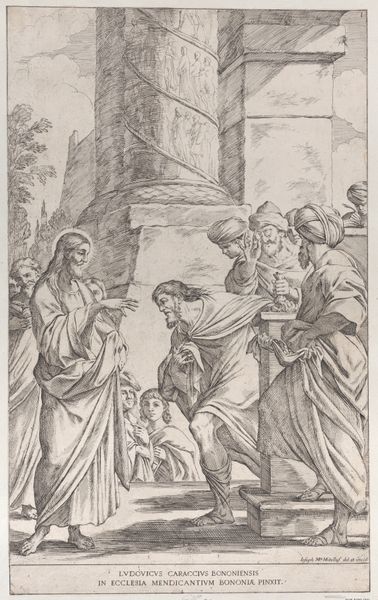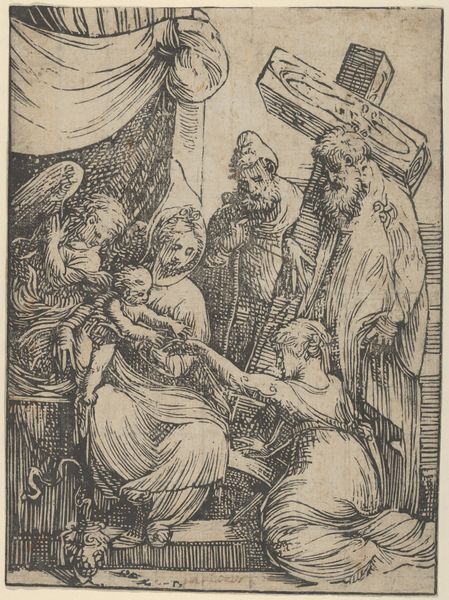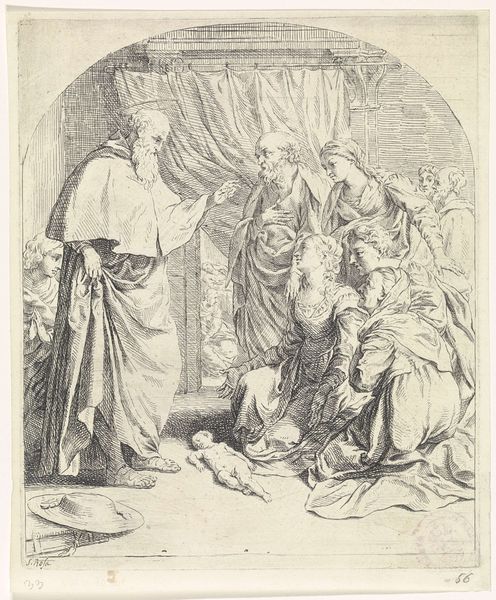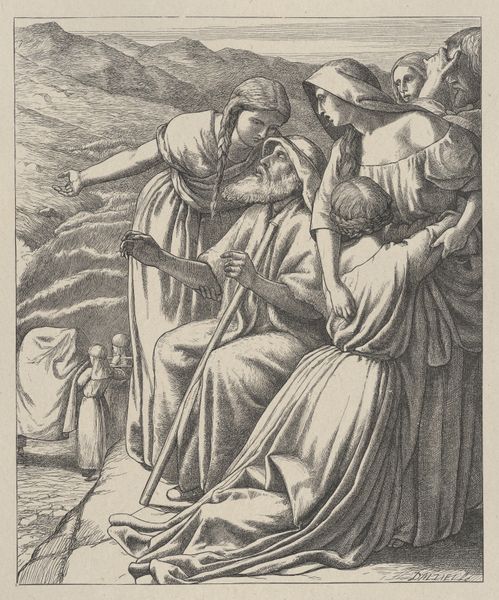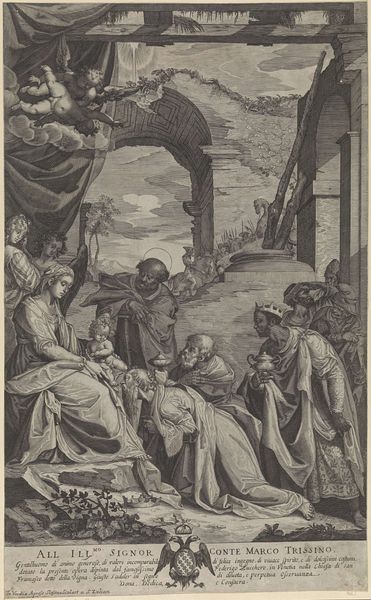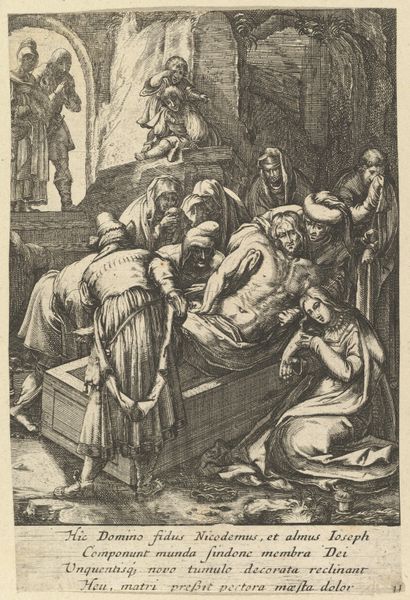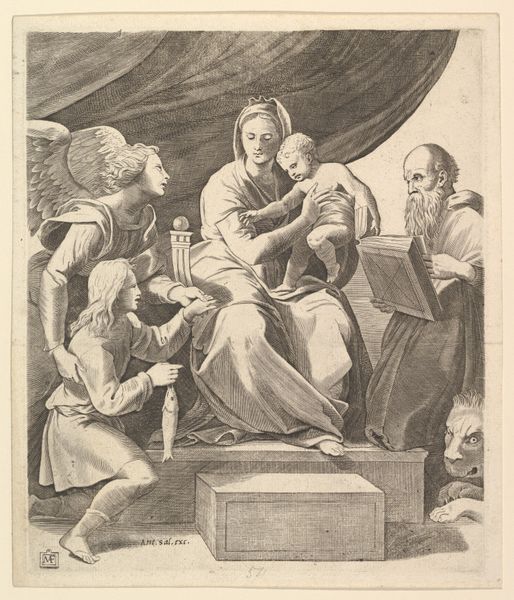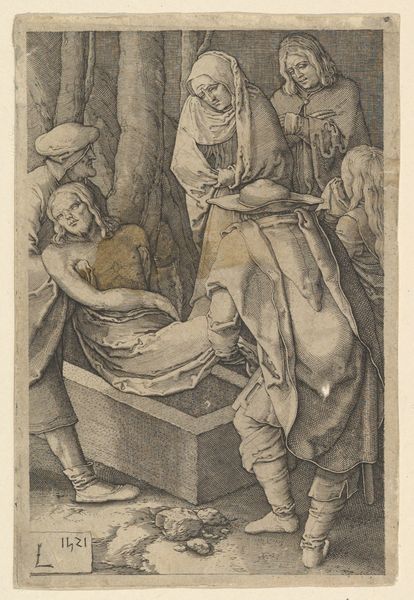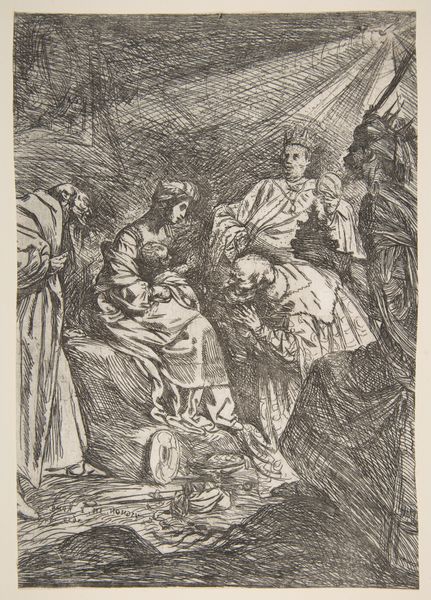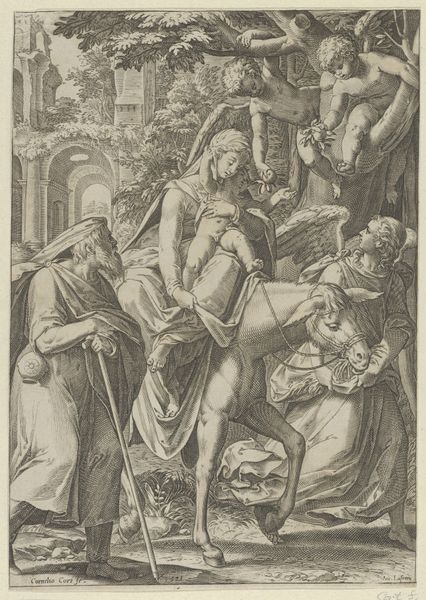
Doge Francesco Donato knielt voor Maria en Christus (rechterhelft) c. 1545 - 1553
0:00
0:00
print, engraving
# print
#
figuration
#
11_renaissance
#
history-painting
#
italian-renaissance
#
engraving
Dimensions: height 430 mm, width 387 mm
Copyright: Rijks Museum: Open Domain
This is a woodcut made by Nicolò Boldrini, likely sometime in the mid-16th century. Look closely and you’ll see that the image is composed of many tiny lines, all carefully cut into the surface of a block of wood. The process involves taking a sharp tool, called a burin, and using it to carve away the areas that will not be printed. This requires immense skill and patience. Boldrini would have painstakingly removed slivers of wood to create the intricate details. The block is then inked, and the image transferred to paper. Think about the labor involved. The wood itself, the specialized tools, the many hours of focused work. The print becomes a kind of contract between artist and audience, with each impression sold or gifted, embodying the artist's skill and time. Woodcuts like this one played a crucial role in disseminating images and ideas during the Renaissance. So, the next time you see a print, remember the handwork that went into it, a testament to human creativity and skill.
Comments
No comments
Be the first to comment and join the conversation on the ultimate creative platform.

